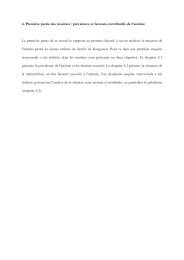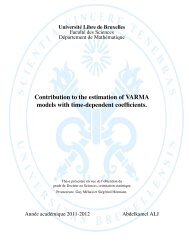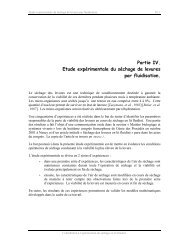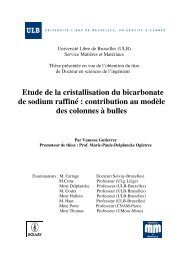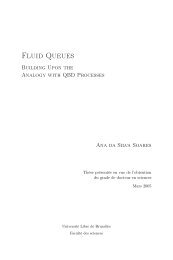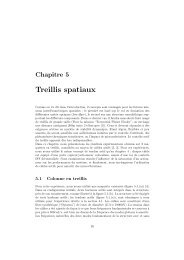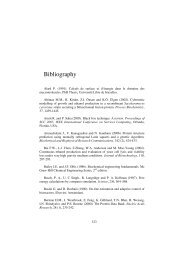Diapositive 1 - de l'Université libre de Bruxelles
Diapositive 1 - de l'Université libre de Bruxelles
Diapositive 1 - de l'Université libre de Bruxelles
Create successful ePaper yourself
Turn your PDF publications into a flip-book with our unique Google optimized e-Paper software.
Chapitre IIIINTRODUCTIONEchino<strong>de</strong>rms are abundant, wi<strong>de</strong>ly distributed benthic invertebrates and theirendoskeletons are generally well preserved in the geological records. This skeleton isma<strong>de</strong> of ossicles located in the <strong>de</strong>rmis. Each ossicle consists in a three-dimensionalnetwork of mineralized trabeculae, the stereom. Each ossicle is composed of a singlecrystal of high-magnesium calcite in which Sr is the main trace element. It also contains0.1% organic material (the intrastereomic organic matrix). The skeleton is formedintracellularly in cell processes of the skeleton-forming cells (for a review, see Duboisand Chen 1989). The high-magnesium calcite phase results from the progressivecrystallization of a transient amorphous calcium carbonate phase (ACC) presumably<strong>de</strong>livered in the calcifying vacuole in the form of ACC-containing vesicles (Wilt 2002,Beniash et al 1997, 1999, Politi et al 2004).The Mg/Ca ratio of the skeleton is related to temperature (Clarke & Wheeler 1922, Chave1954, Weber 1969) and seawater Mg/Ca ratio (Ries 2004). Because the Mg/Ca ratio inseawater is spatially constant and unlikely to change on time scales of



